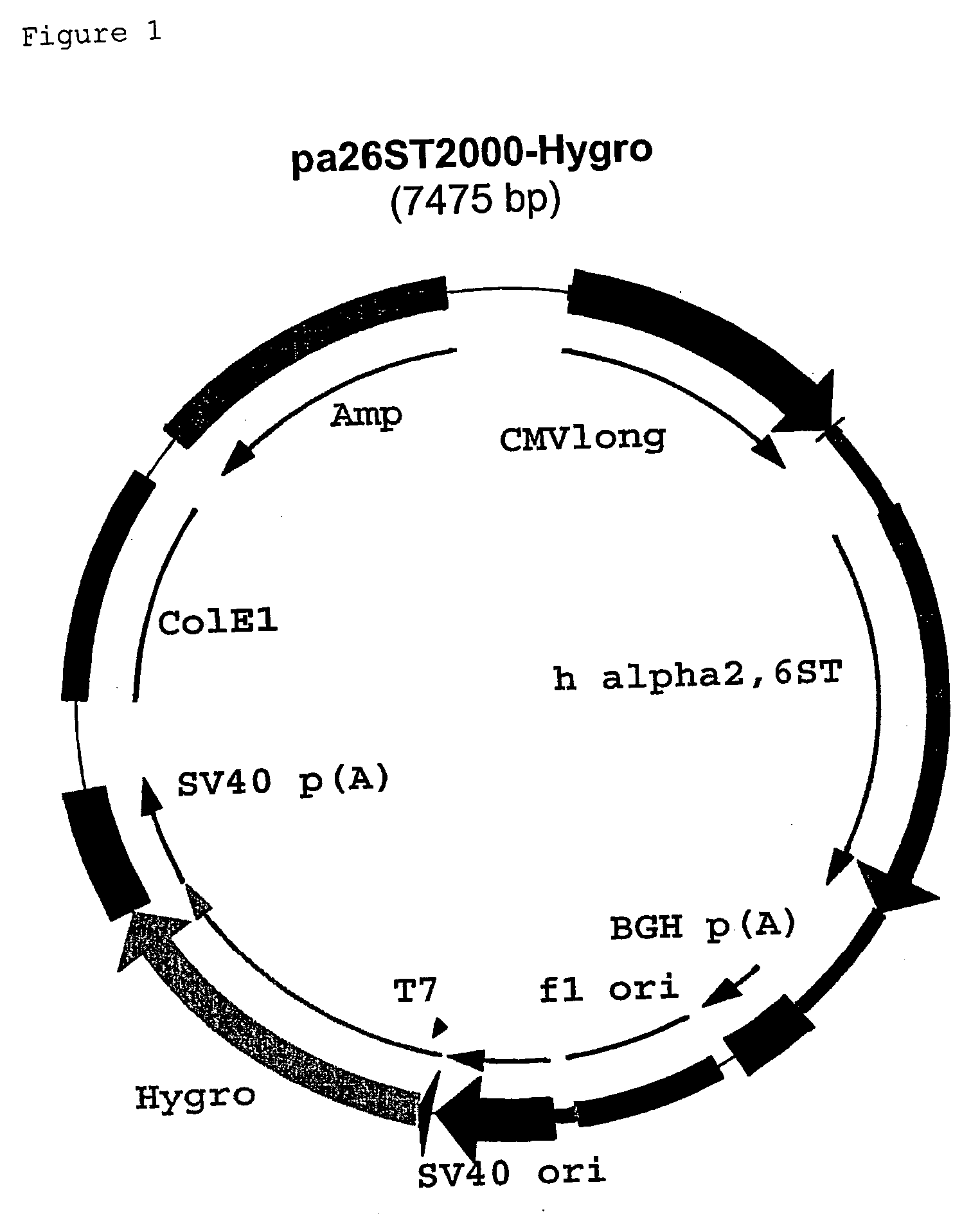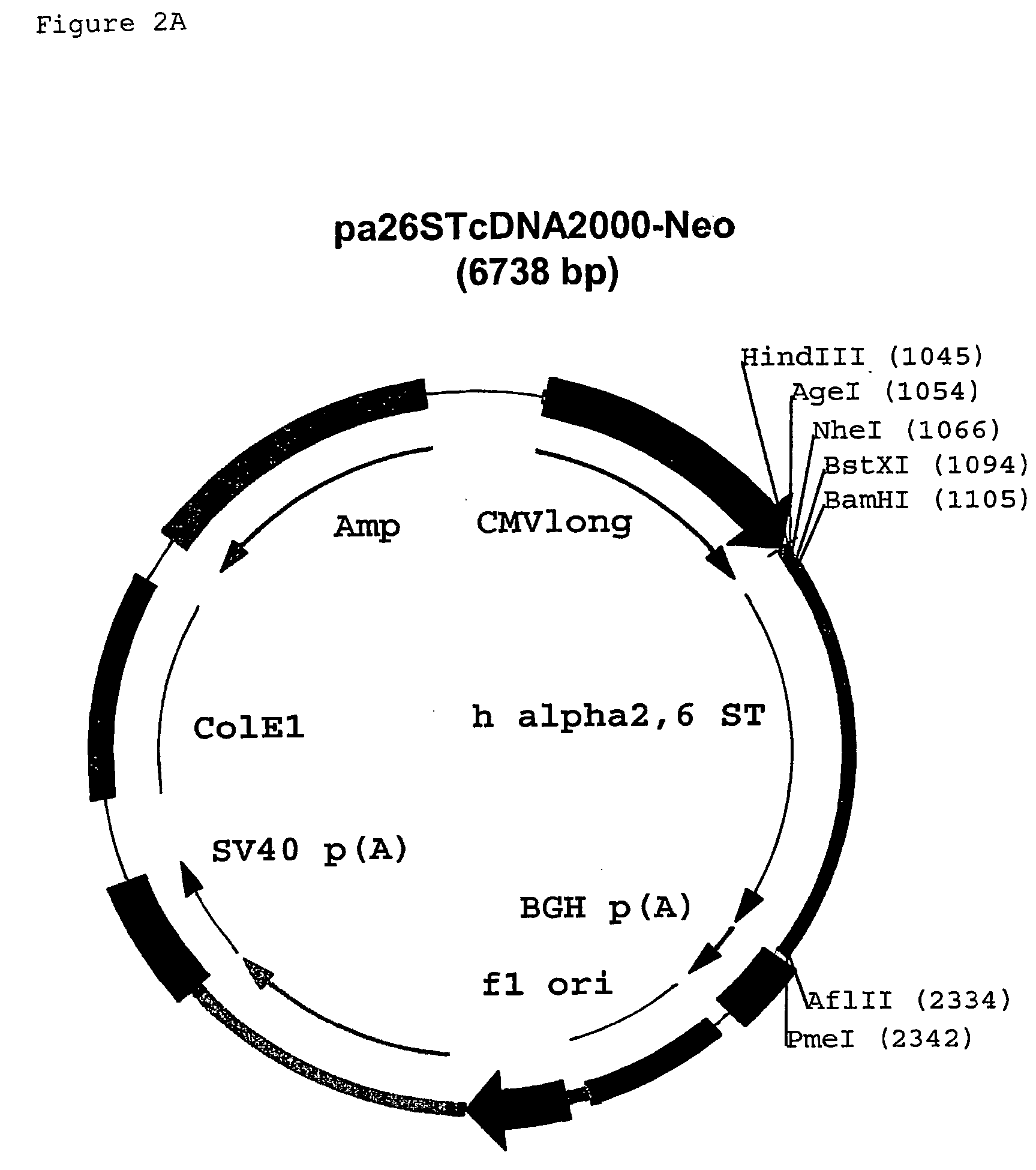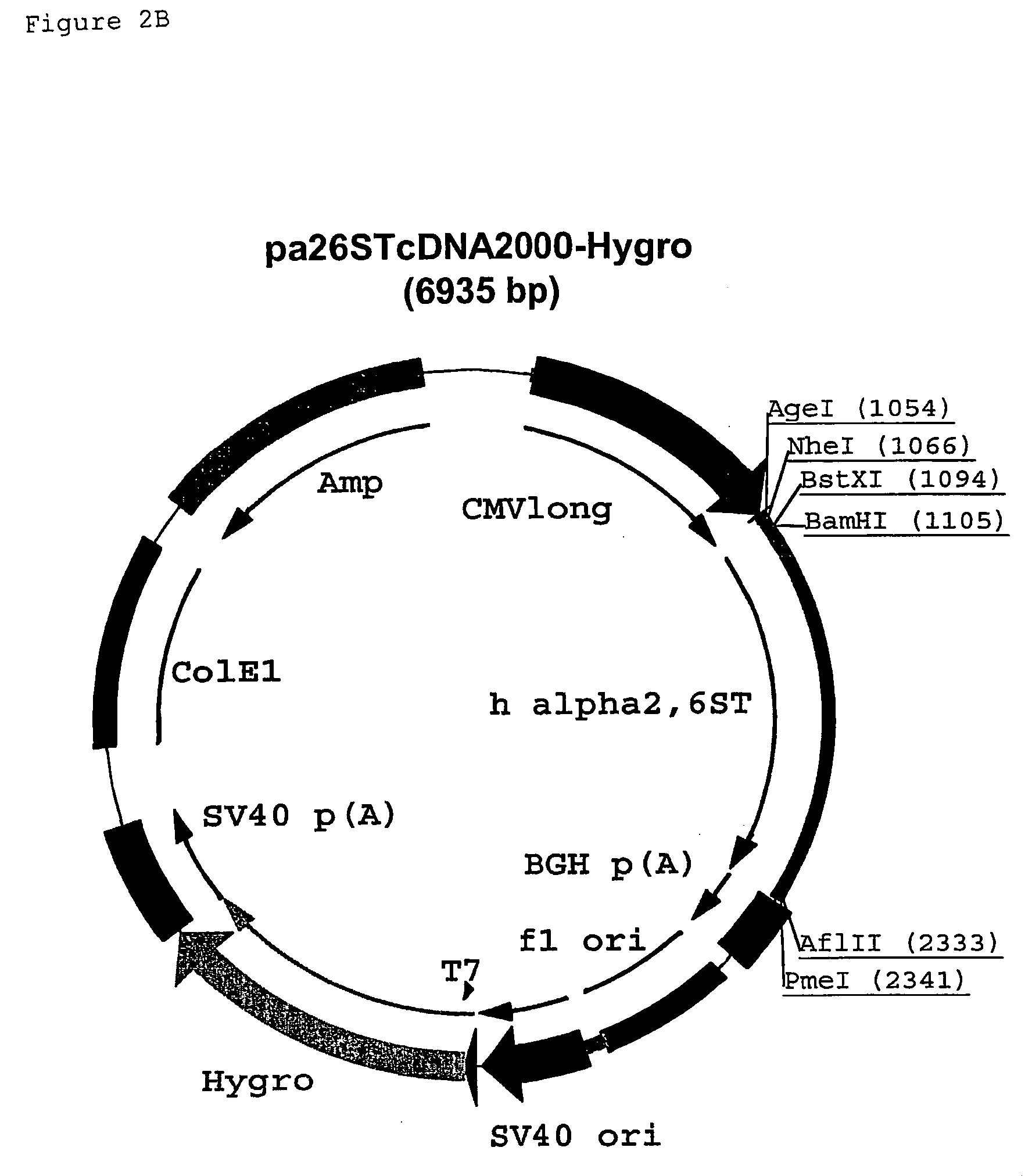Production of viruses viral isolates and vaccines
a technology of viruses and isolates, applied in the field of medicine, can solve the problems of limiting the effect of efficient prevention and treatment of disease, incomplete understanding of underlying pathogenic mechanisms, and increasing the burden on patients
- Summary
- Abstract
- Description
- Claims
- Application Information
AI Technical Summary
Problems solved by technology
Method used
Image
Examples
example 1
Construction of pAlpha2,6ST2000 / Hygro
[0038] The fragment containing the sequence coding for alpha2,6 sialyltransferase was obtained by EcoRI digestion of plasmid pGST-Gal (a gift from Dr. I. van Die, Free University of Amsterdam. The plasmid consists of a pBR322 backbone containing the entire cDNA sequence coding for rat alpha2,6 sialyltransferase, GenBank accession nr. M18769). The fragment was made blunt-ended by T4 DNA polymerase according to standard procedures. After gel purification, the alpha2,6 sialyltransferase encoding fragment was ligated into pcDNA2000 / Hygro (also known as plasmid pcDNA2000 / Hyg(−) which has been described in WO 00 / 63403), which was linearized with Pmel, dephosphorylated and gel purified according to standard laboratory procedures. The resulting plasmid was named pAlpha2,6ST2000 / Hygro (FIG. 1).
example 2
Transfection of pAlpha2,6ST2000 / Hygro in PER.C6-EPO and Selection of Over-Expressing Clones
[0039] PER.C6-EPO were initially generated for other purposes, namely for experiments focusing on glycosylation of erythropoietin (EPO). EPO is a protein involved in stimulation of erythropoiesis and its activity depends heavily on its sialic acid content for in vivo functionality. The PER.C6-EPO cell line is a derivative of PER.C6 and overexpresses the human EPO protein (cells have been described in WO 00 / 63403). The fact that this cell line is producing EPO is not believed to be critical for the present invention. PER.C6-EPO cells were cultured and transfected with pAlpha2,6ST2000 / Hygro, as described below.
[0040] PER.C6 cells were seeded in tissue culture dishes (10 cm diameter) with approximately 2-3 million cells / dish and were kept overnight at 37° C. and 10% CO2. On the next day, cells are transfected using Lipofectamine (Gibco) according to the manufacturer's protocol. Twenty dishes we...
example 3
Generation of alpha2,6- and alpha2,3 Sialyltransferase cDNA Expression Vectors
[0041] A PCR fragment containing the full length cDNA of human alpha2,6 sialyltransferase (GenBank accession nr. 14735135) is obtained by Polymerase Chain Reaction (PCR) on a human cDNA library using methods well known to persons skilled in the art. The primers used for the amplification (sense: 5′-TTT TTT GGA TCC ATG ATT CAC ACC AAC CTG AAG AAA AAG-3′ SEQ ID NO: 1, antisense: 5′-TTT TTT CTT AAG TTA GCA GTG AAT GGT CCG GAA GC-3′ SEQ ID NO: 2) contain an additional 5′-tail that allows digestion with BamHI in the sense primer and AflII in the antisense primer, respectively. The PCR product is purified via agarose gel electrophoresis and digested with BamHI and AflII and, subsequently, cloned into pcDNA2000 / Hygro (described as pcDNA2000 / Hyg(−) in WO 00 / 63403) and into pcDNA2000 / Neo (this vector was basically constructed in the same way as pcDNA2000 / Hyg(−) from pcDNA2000 / DHFR as has been described in detail i...
PUM
| Property | Measurement | Unit |
|---|---|---|
| Acidity | aaaaa | aaaaa |
| Antigenicity | aaaaa | aaaaa |
Abstract
Description
Claims
Application Information
 Login to View More
Login to View More - R&D
- Intellectual Property
- Life Sciences
- Materials
- Tech Scout
- Unparalleled Data Quality
- Higher Quality Content
- 60% Fewer Hallucinations
Browse by: Latest US Patents, China's latest patents, Technical Efficacy Thesaurus, Application Domain, Technology Topic, Popular Technical Reports.
© 2025 PatSnap. All rights reserved.Legal|Privacy policy|Modern Slavery Act Transparency Statement|Sitemap|About US| Contact US: help@patsnap.com



